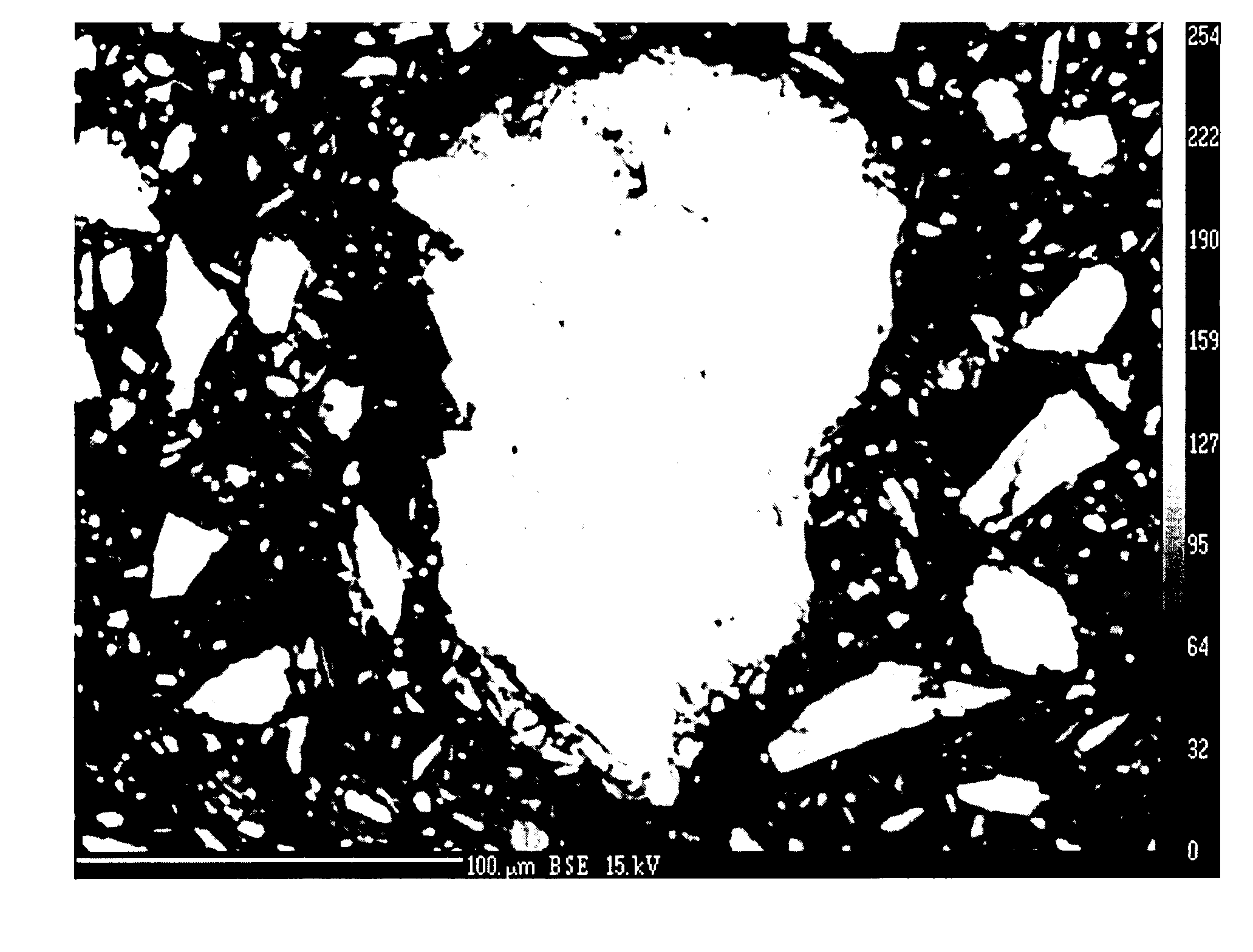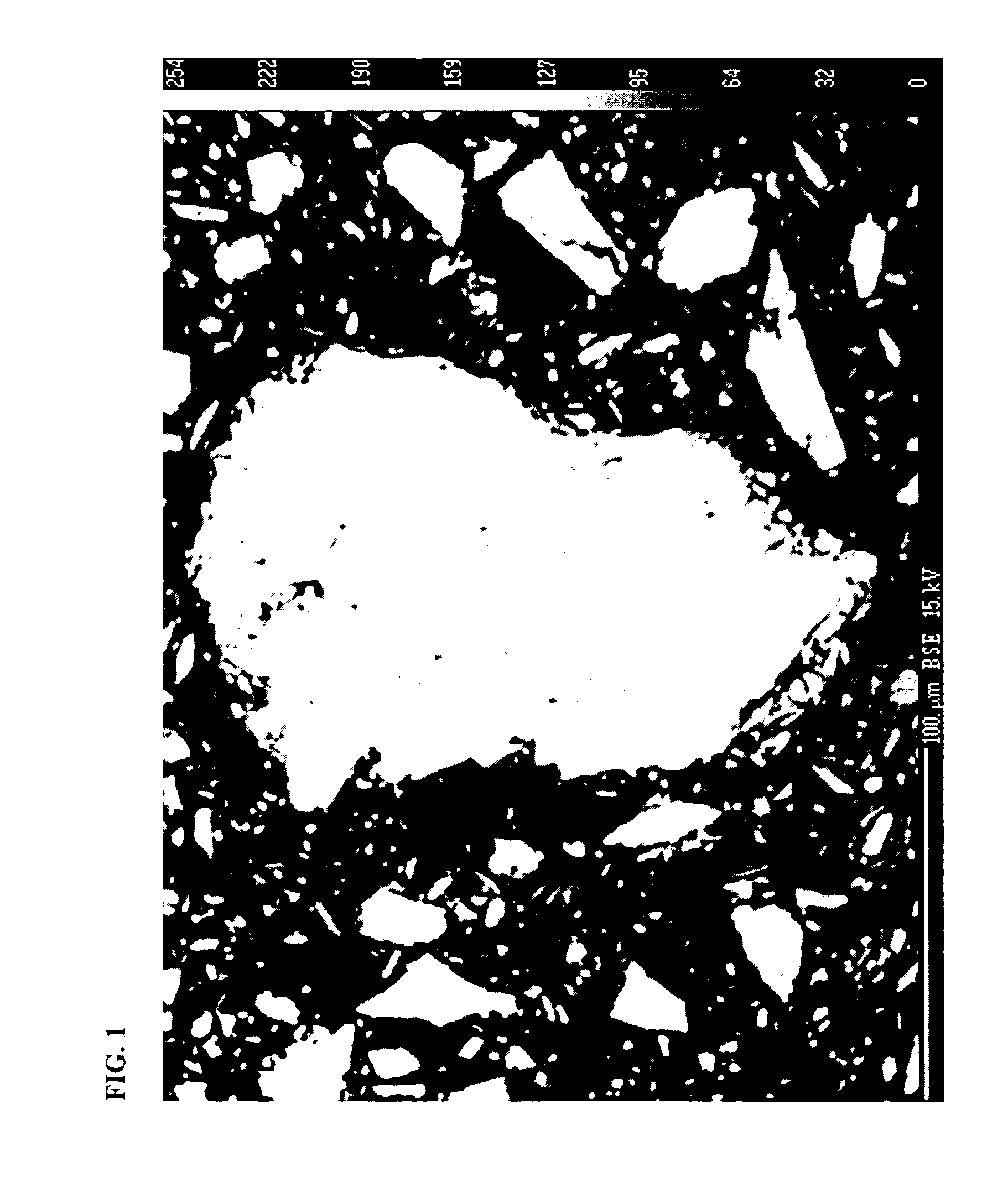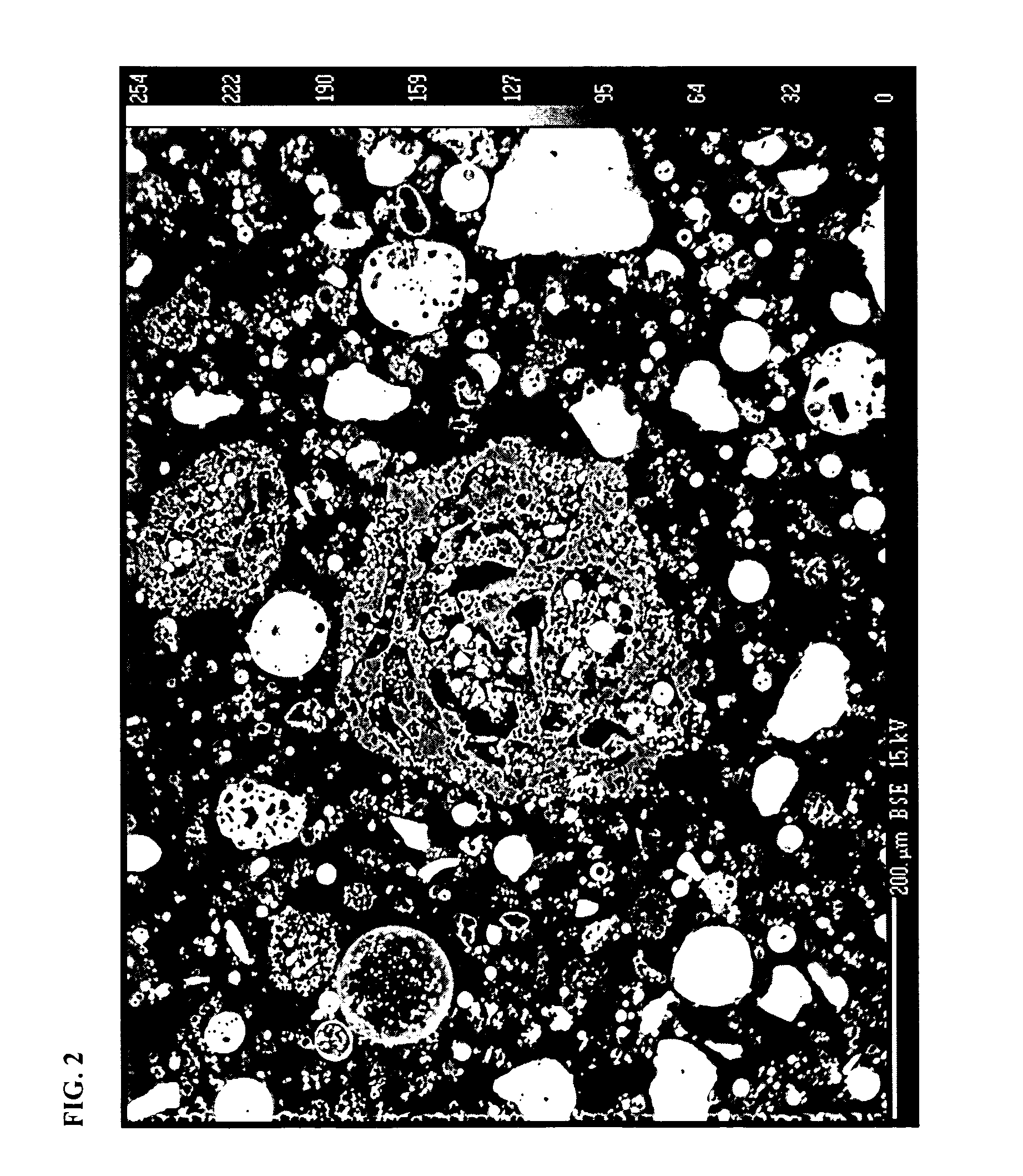Process and apparatus for hot-forging synthetic ceramic
a technology of synthetic ceramics and hot pressing, applied in the field of advanced ceramics, can solve the problems of high cost of specialized parts, high cost of hot pressing process, brittleness, etc., and achieve the effect of less porous and impermeable articles, zero open porosity
- Summary
- Abstract
- Description
- Claims
- Application Information
AI Technical Summary
Benefits of technology
Problems solved by technology
Method used
Image
Examples
example 1
[0097]Quarry Fines A were dried, screened through a 200-micron screen, mixed with 6% water, pressed into a green tile blank at 25° C. and 19 MPa (2,800 psi), which was then dried to make a green tile blank before subsequent work. The cold, dry, green tile blank with a square shape and an edge dimension of about 32.4 cm (12.75 in.) was placed in a hot furnace at about 1185° C. on a platform of mullite tubes. The tile blank rapidly came up to the furnace temperature, and it was held there for 10 to 15 minutes. Using a long steel fork, the tile blank was then transferred in less than about 10 seconds to a press, where it was placed entirely within the cavity of a lower die of a 33.6-cm (13.25-inch) square tile mold. The upper die was lowered and approximately 11 MPa (1600 psi) was applied to the tile for about 1 second. The forged tile was then removed and transferred in less than 10 seconds to a cooling furnace at 800° C. FIG. 10 shows a SEM of a hot-forged tile made by the process of...
example 2
[0099]Quarry Fines A were dried, screened through a 200-micron screen, mixed with 6% water, pressed into a green tile blank at 25° C. and 19 MPa (2,800 psi), which was then dried to make a green tile blank before subsequent work. The cold, dry, green tile blank with a square shape and an edge dimension of about 32.4 cm (12.75 in.) was placed in a hot furnace at 1185° C. on a pre-heated flat plate of nitrided silicon carbide (Advancer® SiC) The tile blank rapidly came up to the furnace temperature, and it was held there for 10 to 15 minutes. Using a long steel fork, the tile blank was then transferred in about 7 seconds to a press. Referring now to FIG. 13 and its subfigures, the preheated tile blank 22 was placed in a press over a set of four square cavities 25, each about 10.8-cm (4.25-inch) square. As shown in FIGS. 13A and 13B, an upper set of dies 21, affixed to a die platen 24, was lowered and punched through the hot tile blank, leaving an unpressed “picture frame” of scrap 26 ...
example 3
[0102]Quarry Fines A were dried, screened through a 200-micron screen, mixed with 6% water, pressed into a green tile blank at 25° C. and 19 MPa (2,800 psi), which was then dried to make a green tile blank before subsequent work. The cold, dry, green tile blank with a square shape and an edge dimension of about 32.4 cm (12.75 in.) was placed in a hot furnace at 1185° C. on a flat plate of nitrided silicon carbide (SiC) The tile blank rapidly came up to the furnace temperature, and it was held there for 10 to 15 minutes. Using a long steel fork, the tile blank was then transferred in about 4 seconds to a press. Referring now to FIG. 14 and its subfigures, the preheated tile blank 32 was placed in a press over a cavity 35 of a lower die 33 of a 33.6-cm (13.25-inch) square tile mold. Because the tile blank was wider than the lower die cavity 35, it did not sit inside the cavity, but rather was supported over it, approximately centered. As shown in FIG. 14A, which shows the bottom face ...
PUM
| Property | Measurement | Unit |
|---|---|---|
| Temperature | aaaaa | aaaaa |
| Temperature | aaaaa | aaaaa |
| Temperature | aaaaa | aaaaa |
Abstract
Description
Claims
Application Information
 Login to View More
Login to View More - R&D
- Intellectual Property
- Life Sciences
- Materials
- Tech Scout
- Unparalleled Data Quality
- Higher Quality Content
- 60% Fewer Hallucinations
Browse by: Latest US Patents, China's latest patents, Technical Efficacy Thesaurus, Application Domain, Technology Topic, Popular Technical Reports.
© 2025 PatSnap. All rights reserved.Legal|Privacy policy|Modern Slavery Act Transparency Statement|Sitemap|About US| Contact US: help@patsnap.com



